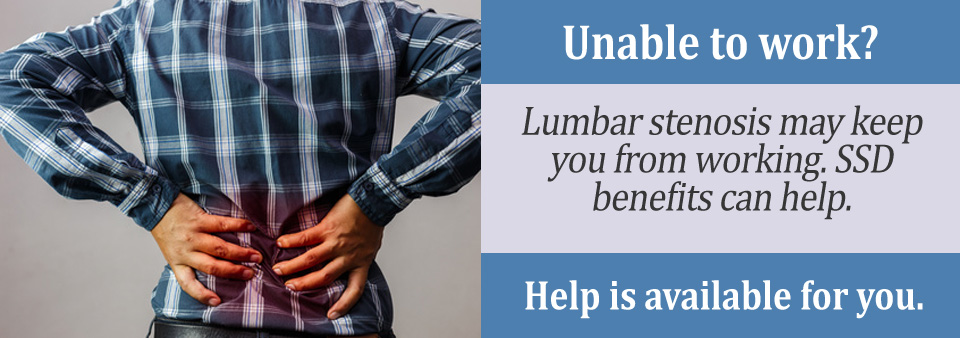It starts as a nagging sensation at various points along the back. Time passes, and the pain becomes worse until one day, you have a difficult time getting out of bed. The development of lumbar stenosis is a direct function of aging. Osteoarthritis represents the most common cause of the pain associated with lumbar stenosis.
If you work a job that requires prolonged stints when you stand up and move about, the development of severe lumbar stenosis symptoms can keep you out of work for an extensive amount of time. How do you provide for your family during the time it takes to recover from lumbar stenosis? The answer lies in a safety net program managed by the Social Security Administration (SSA).
An Overview of SSDI
Workers sidelined from a job because of the development of lumbar stenosis should file for Social Security Disability Insurance (SSDI) benefits. SSDI covers most of the costs associated with lost wages, as well as the health care bills that pile up during the treatment and rehabilitation associated with the medical condition. Submitting an SSDI claims requires an attention to detail, as well as a willingness to respond to a denied claim.
The SSA uses a strict standard of criteria to evaluate SSDI applications. After a short initial review, the SSA sends all documents to your state’s Disability Determination Services (DDS) for a more extensive review of your case. The SSA requires all SSDI application to be vetted by using the Blue Book, which is a long list of medical conditions and the qualifying symptoms that get SSDI applications approved. According to the Blue Book, the approved symptoms for lumbar stenosis, which also goes by the name spinal stenosis, is covered by section 1.04.
How Does SSDI Impact Medicare Coverage?
One of the transformational changes of the American workforce is the trend of workers staying on the job when they reach their retirement years. If lumbar stenosis has prevented you from working a full-time job during the time you become eligible for Medicare coverage, which government program offers you the most comprehensive set of financial benefits?
The answer is SSDI because Medicare takes care of just the cost of health care expenses. Unlike SSDI, Medicare does not compensate workers for lost wages. In addition, you have to wait two years to qualify for Medicare health care coverage during the time you receive SSDI benefits.

Getting Back to Work
SSDI represents temporary financial relief to help physically distressed workers recover from a serious illness or a personal injury. The ultimate goal of the SSA is to get American workers back to work in a job that matches their skill level. One program managed by the SSA to transition disabled workers back into the workforce is called Plan to Achieve Self-Support (PASS).
One of the goals of PASS involves teaching disabled workers to save money for learning new job skills. Many disabled workers cannot return to their previous positions because of physical limitations. PASS helps them acquire new job skills to get back into the American workforce.
Schedule a Free Case Evaluation
The SSA rejects a majority of first time SSDI application. To ensure your application exceeds the standards listed in the Blue Book, contact a Social Security attorney to schedule a free case evaluation. A case evaluation exposes any flaws in your application, with your lawyer making suggestions about how to bolster your claim. Complete the Free Case Evaluation.